You’ve got to hand it to Holden, they’ve got big balls. At a time when diesel cars seem to be a dying genre, out pops the Commodore diesel.
That’s not to say they’re alone – the excellent Mazda6 diesel is a wagon to be respected, but it seems that each new car launch we go to, diesels are either non-existent, or there’s one token diesel, at best. More often than not, there just isn’t one. With high-efficiency petrol engines pumping out loads of torque and being relatively economical as well, there’s no need for a diesel – is there?
I tested the 2018 V6 AWD Commodore not long ago, and was impressed – far more so than I thought I’d be. John went to the launch of the 2018 Commodore and drove the 4-cylinder petrol model, and declared it better than the V6.
So to the diesel – only available in front-wheel drive (FWD) – is there a market for it, and is it any good?
We had a trip planned to go to Auckland from Wellington and back with a car load of gear – Holden came to the rescue with our test car. Clocking up almost 1,600km in the new diesel model loaded up with gear was going to be a decent test.
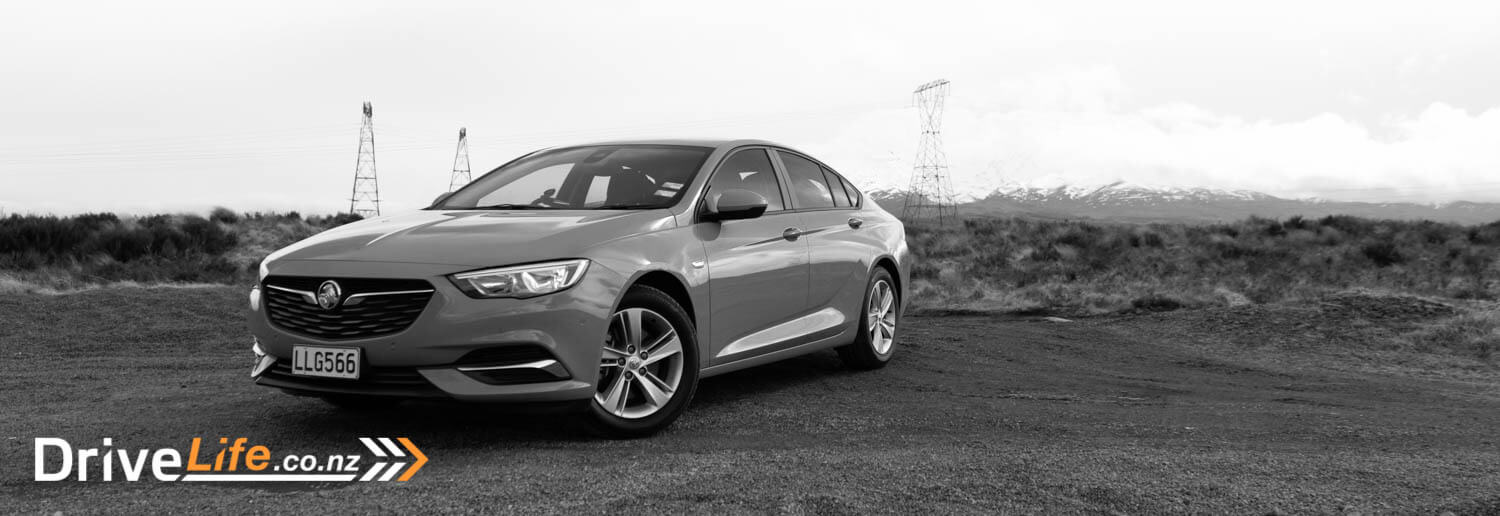
The Range
You can read about the petrol versions in our previous review.
If you do want a diesel Commodore, there’s two models to pick from; the base LT (our test car) at $48,990, and the LT Sportwagon at $50,990. So yeah – two models, same engine, same specs, different body style.
The diesel engine puts out 125kW of power and a decent 400Nm of torque, and meets the Euro 6 standard for emissions. While the petrol Commodores are fitted with a 9-speed auto, the diesels have an 8-speed.
As far as features and goodies go, the LT in either liftback or Sportwagon adhere to the same specs as the petrol cars. This means that standard equipment is reasonable, with all models having Apple CarPlay/Android Auto capability, front and rear parking sensors, reversing camera, LED DRLs, automatic headlights, auto wipers, advanced park assist, the ‘Holden Eye’ system which incorporates Autonomous Emergency Braking with Pedestrian Detection, Lane Departure Warning, Lane Keep Assist, Forward Collision Alert, and a Forward Distance Indicator. 17” alloys are also standard, along with cruise control/speed limiter, push-button start (with remote start), dual zone AC, LED tail lamps, an 8-way power driver’s seat, a 7” colour touchscreen and 7-speaker audio system.
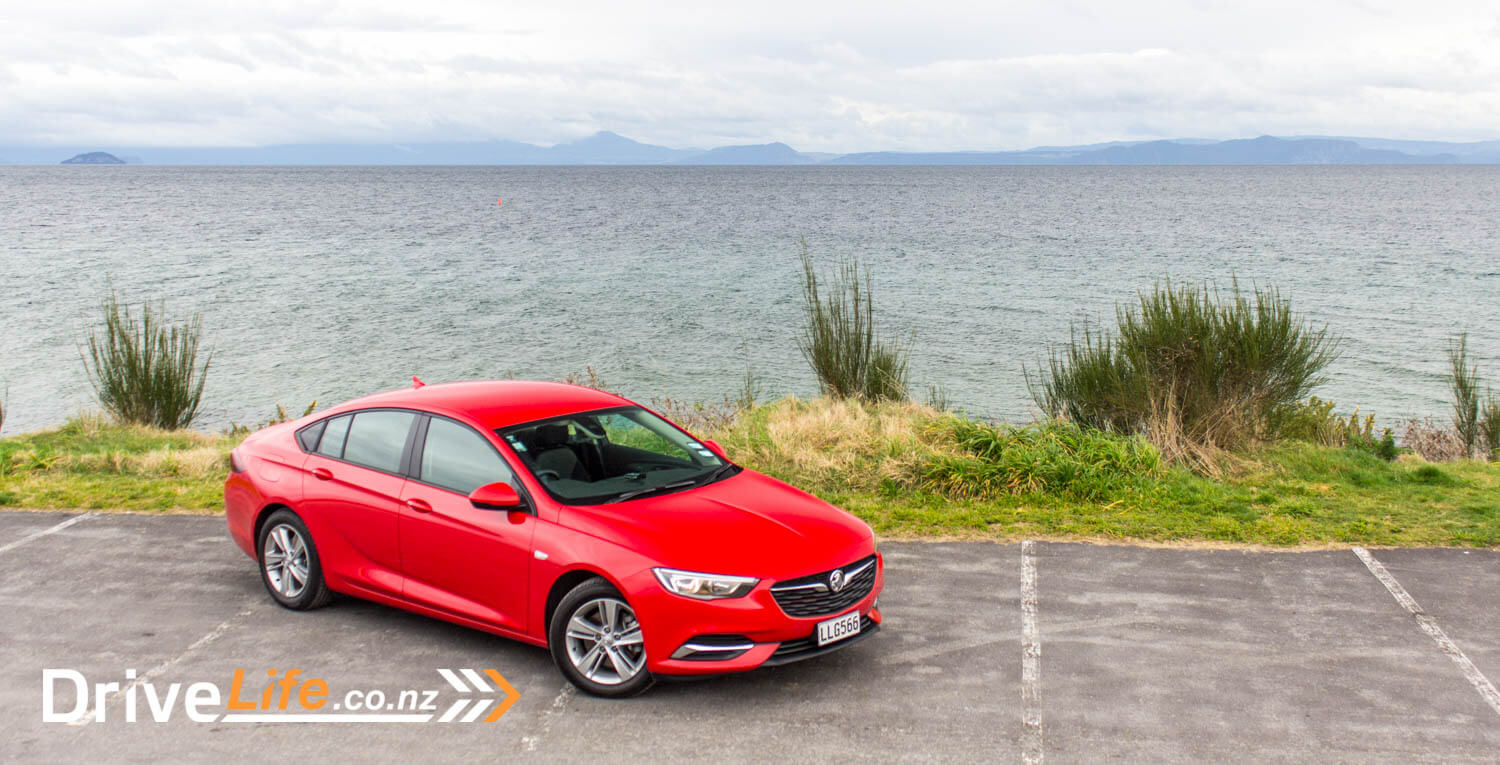
First Impressions
The V6 we tested was metallic black, and looked good. Our diesel test car was finished in Absolute Red, which didn’t look as good, but still nice. I really like the lines of the new Commodore – it manages to make the car not look enormous, but still has a presence.
I must admit that during my time with the car, people often thought it was a mufti cop car, especially if we stopped at the side of the road. At times, this worked in our favour.
When you buy the diesel Commodore, well ain’t no one going to know easily. There’s no badging at all – not even an ‘LT’ badge. Only the single exhaust pipe will give the diesel away – all petrol Commodores have dual exhausts.
No one I spoke to didn’t like the lines of the car – we all still love the look of the ‘old’ Commodore, but there’s nothing wrong with the new one either, from any angle.
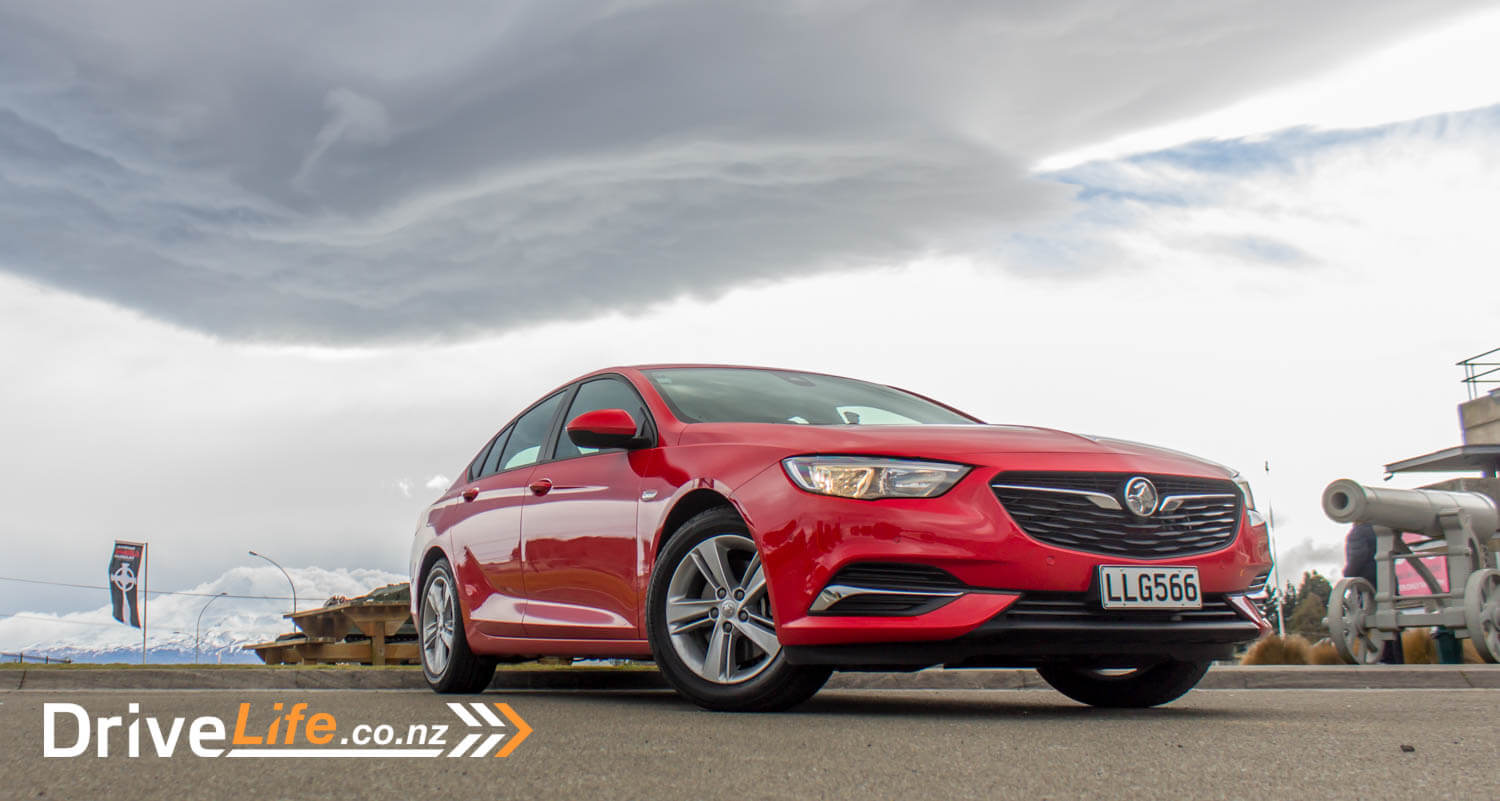
The Inside
Since this is the base model, she’s fairly basic on the interior – no heated seats, no electric park brake auto hold, no paddle shifters. There’s lots of black plastic too, but this is par for the course in a base-spec car.
The driver does get an 8-way electric seat, and the trim is cloth seating all round. Par for the course too is the mostly black interior, broken up by the beige headlining and pillars. With the big windows all around, the Commodore doesn’t feel dark inside at all – even without a sun roof.
Then again, it’s a big car – you aren’t left wanting for space here, front or back. Rear seat passengers are pretty spoilt with the amount of leg and shoulder room they get.
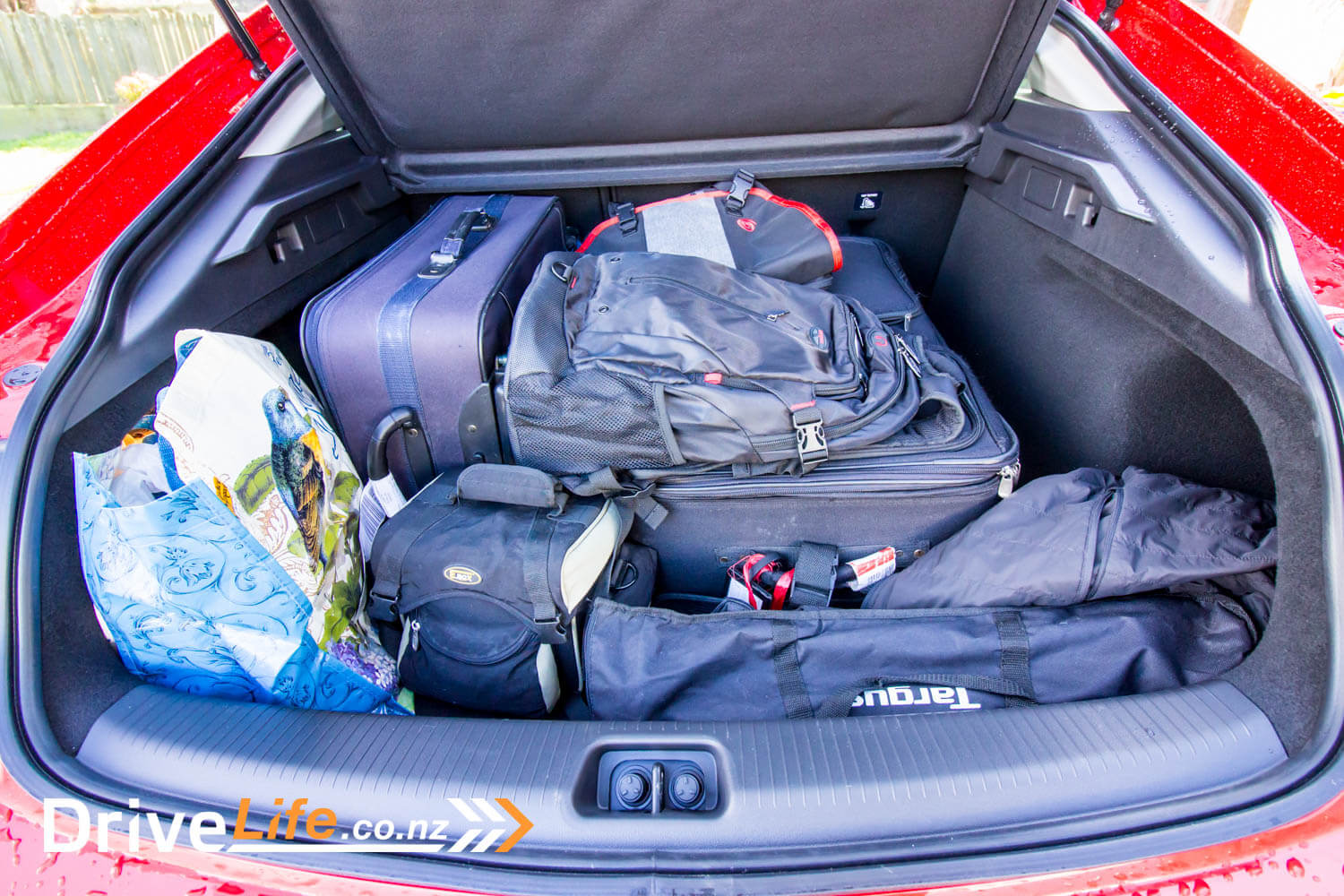
We managed to load up the boot pretty well – it doesn’t compare to a Skoda Superb, but is still pretty usable at 490 litres (the Skoda comes in at 625 litres). I know I mentioned this before in the V6 test, but the Commodore really needs an electric boot opening, even on the base model.
My wife didn’t actually struggle opening the boot, but it’s pretty heavy. I think if you were parked facing uphill, a smaller-built person might struggle to open it.
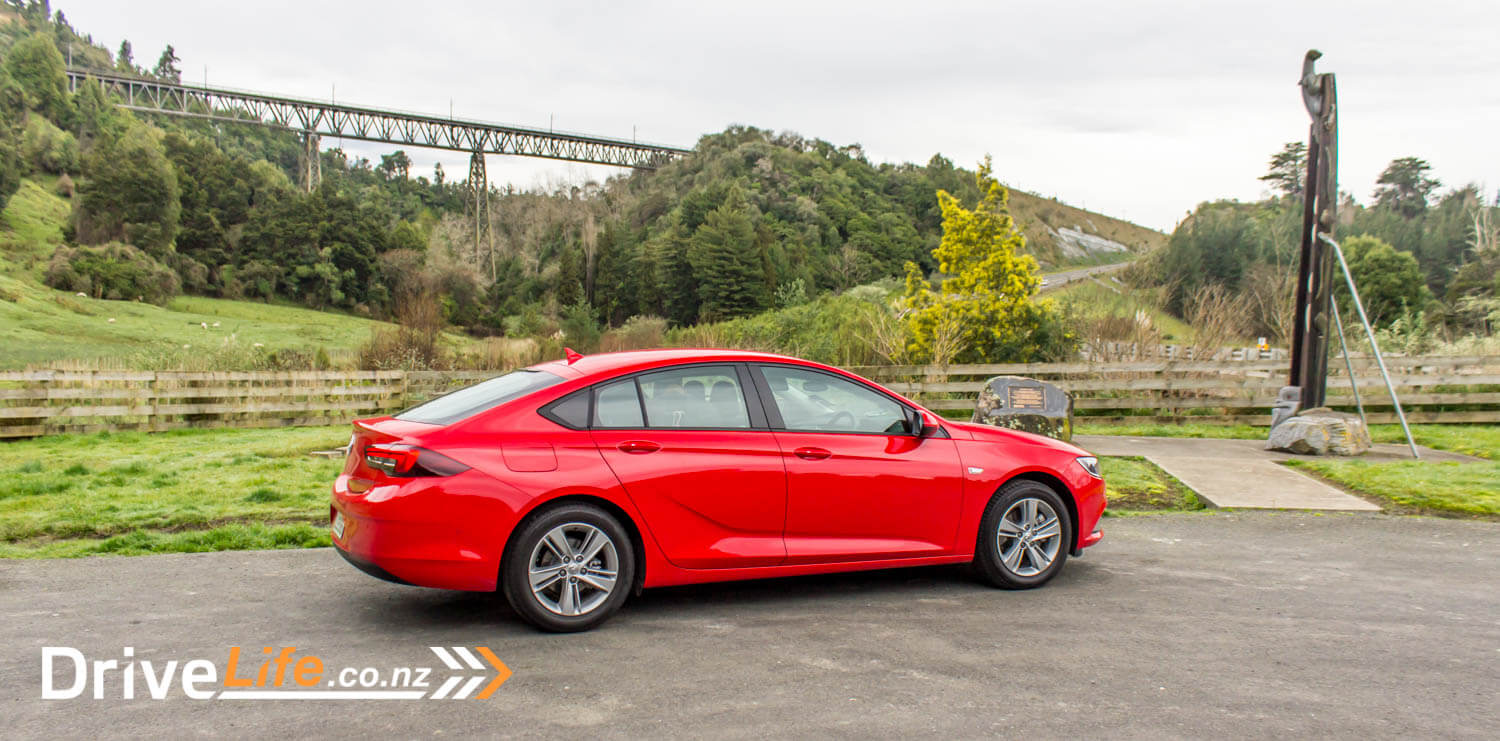
The Drive – Wellington-Auckland-Wellington
We left Wellington with 1,000km of range showing on the trip computer. That’s a pretty decent range for a big, heavy car with a 61-litre tank.
I settled into the driver’s seat, wondering if the lack of lumbar adjustment was going to be an issue. This is one trip where lumbar adjust really comes into its own.
Under around 30km/h, you can pick this engine out as a diesel, but it’s not that easy; some of the new high-efficiency direct-injection petrol engines are pretty noisy at around town speeds.
Once we hit the motorway, engine noise completely disappeared. There was nothing. No drone, no rattle, no noise. Almost a lie – there’s some road noise, and over the course of our trip, tyre noise over coarse chip seal was pretty evident.
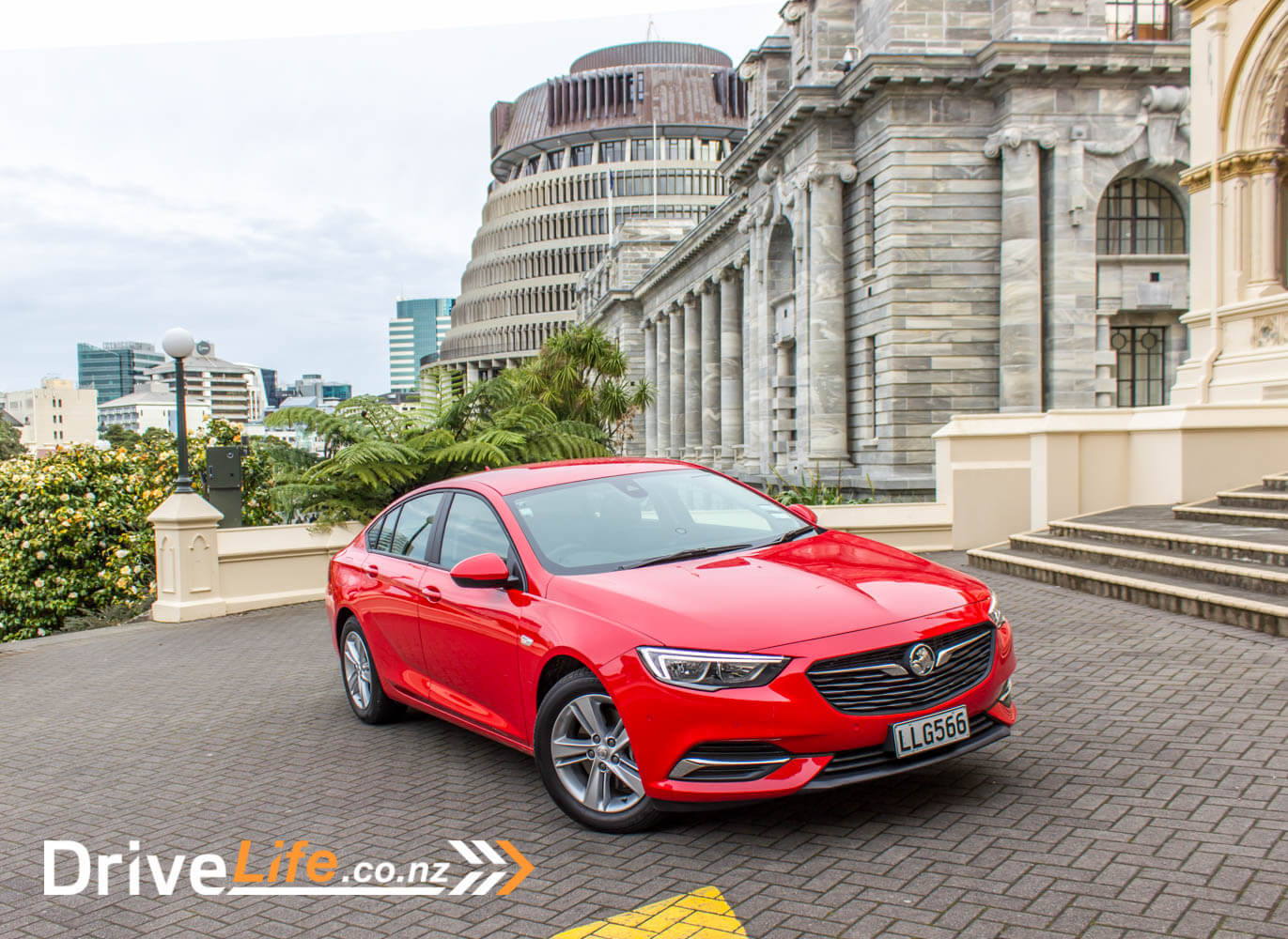
I hit the cruise control buttons and settled back for the long haul, but the first sign of slowing traffic brought back the reality that the $48K Commodore doesn’t have adaptive cruise control. Such a shame, and the one thing I longed for, for nearly 2,000km. The cruise control works just fine, but adaptive cruise is the only way to go.
Playing with the driver’s information display (DID) on the long stretches, I hit the reset buttons to get our fuel consumption to start fresh. I do like that you can actually cycle up and down through the menus; lots of cars only allow you to go one way, and you have to cycle through all the menus to get back to where you want to be. Often you push the button that one time too many, and then have to do it all again. The Commodore lets you go up or down, then hitting the Menu button on the indicator stalk will get you to the other sections of the menus.
Another thing I mentioned with the V6 review, and it hit me again. The Commodore has a handy ‘distance in seconds to the car in front’ icon on the rev counter; a green car icon means you are at a safe distance, but if it turns orange, you’re too close. The thing is it doesn’t turn orange until you are 0.6 seconds away from the car in front. Dangerous stuff, Holden. The Road Code says 2 seconds, so this really needs to be calibrated right.
The speedo on the car goes up to 270km/h, which means that the speedo is a little busy, trying to fit all those numbers in. But you always have the digital speedo as well, and generally I left the DID on speed the whole time. As long as you don’t speed, all driving is safe according to the advertisements.
By the time we hit the Desert Road, the Commodore was impressing me more and more with its chassis – this is one smooth handling, good riding car. It glides over most bumps and potholes, and yet the handling is surprisingly excellent. In fact, it felt like it rode much better than the V6 version I tested – not as firm. This is probably down to the smaller 17” wheels, and 55 profile tyres (the V6’s tyres are 45s on 18” wheels), and that the Commodore was designed for a four-cylinder engine, not a V6.
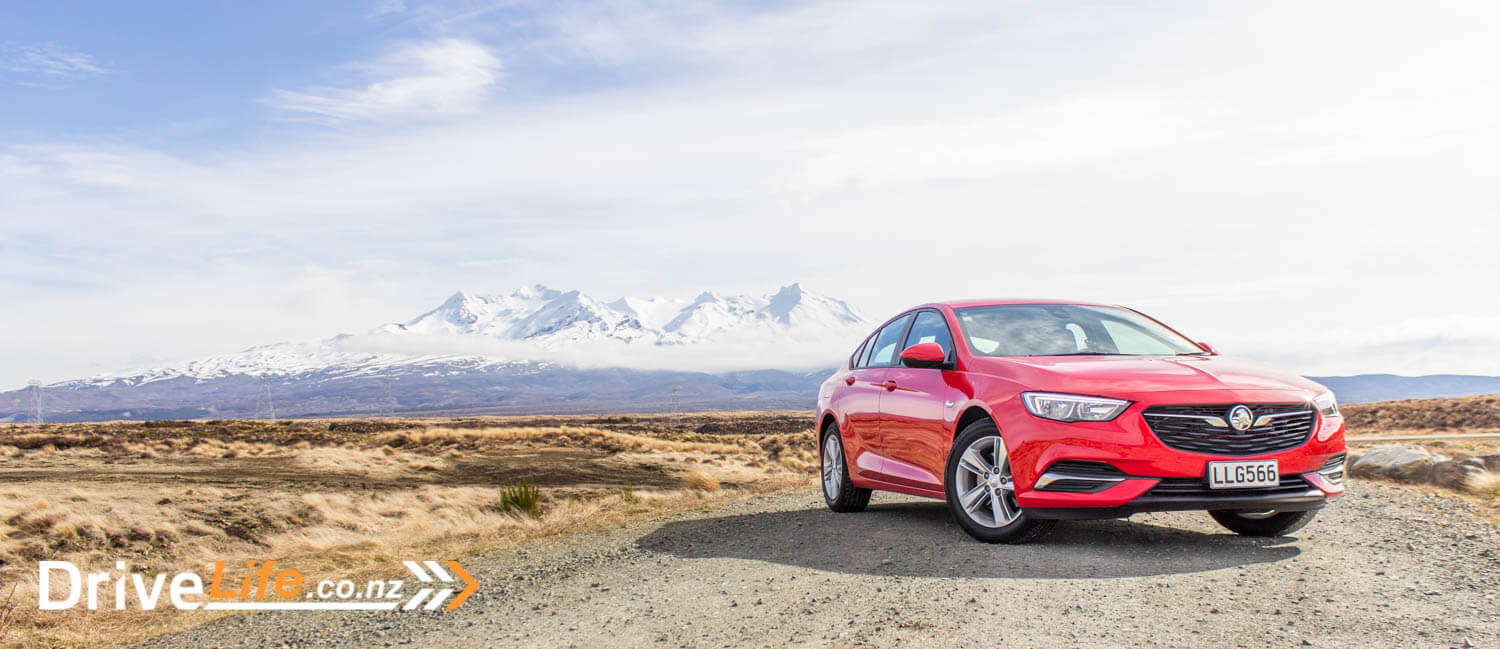
We got to the twisty corners of the Desert Road, and the Commodore took them in its stride, as I pushed it a harder on the bends. In fact, there was a Nissan 300Z behind us who was obviously struggling to keep up – remember our boot and back seat are loaded up. The steering feedback and feel was excellent, and the turn-in to the corners even more so. Then it struck me – this is the front-wheel drive model – it was the AWD V6 I tested last time. For a heavy front-wheel drive car, the chassis is superb. You do get some body roll on the long sweepers, but a push of the gas pedal brings the body back into line.
I need to mention the 8-speed auto in the diesel car. I wondered if I’d notice any difference in the transmissions between the 9-speed in the V6, and this one. I didn’t notice a thing. Both are excellent gearboxes, and the 8-speed in the diesel does just fine, with silky smooth shifts. It’s faultless as far as automatic gearboxes go.
We stopped in Taupo for a coffee, and promptly noticed that if you have anything plugged into the 12V socket (as I did) then the right-hand cup holder is blocked off. Not the end of the world though as there’s another one just in front of the centre cubby. Those who are OCD might struggle with this.
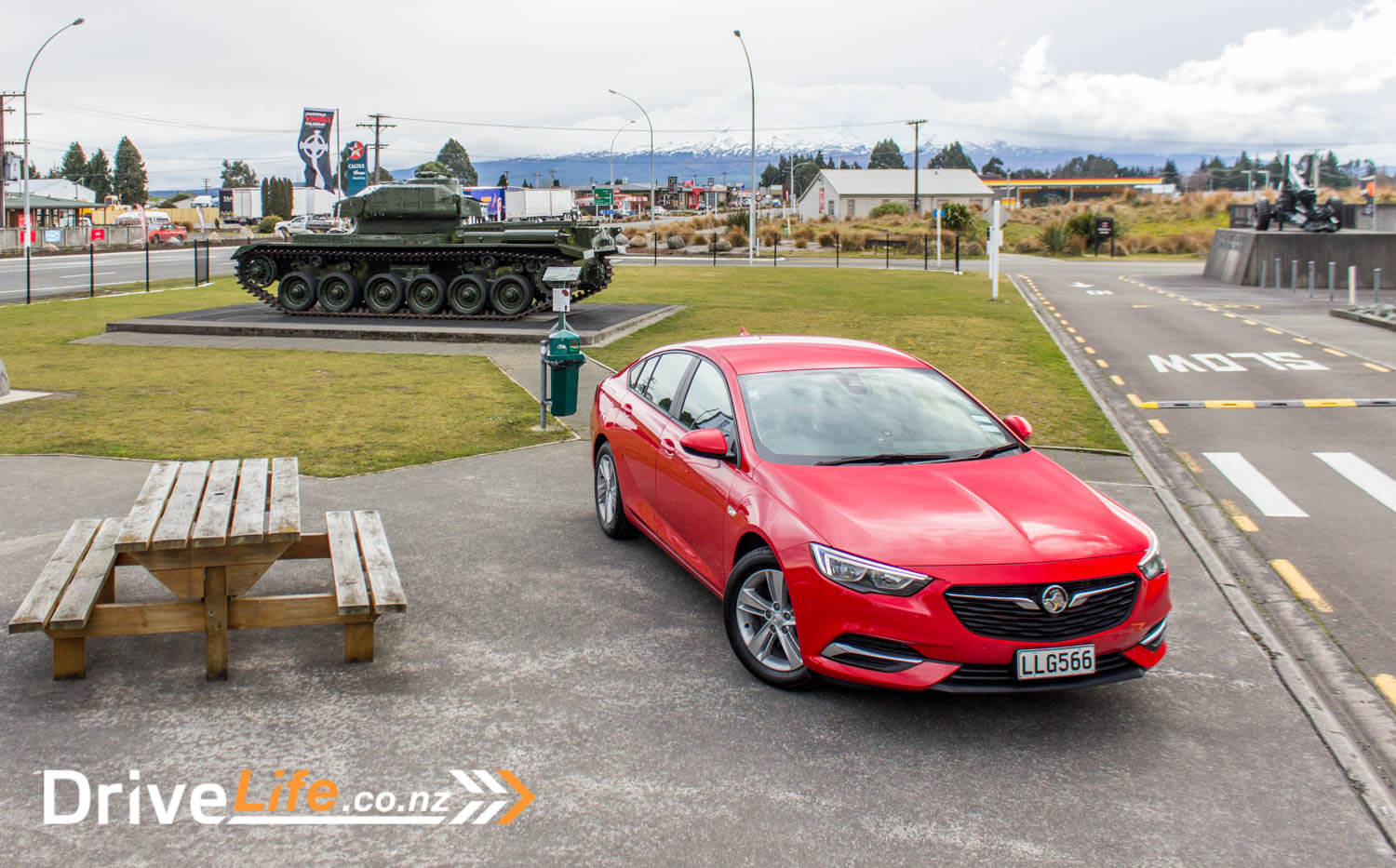
Getting back into the car, it came to light that horrible thing that some cars do. You’ve been listening to music on your phone via Bluetooth, and when you get back into the car, it reverts to the radio. So you have to wait for your phone to connect, then hit the Source button, wait, then wait some more – and then you are back to Bluetooth. I’m not sure why some manufacturers still do this, and this one simple thing can be frustrating as hell.
We left Taupo with 579km range still left, and punched in the address of the hotel. The car doesn’t have built-in SatNav, so we used an iPhone and Apple CarPlay. This isn’t a problem, but I’ve often noticed that this does mean that you don’t get any turn-by-turn directions in the driver’s info display. Again, not the end of the world but something to keep in mind.
North of Taupo, the heavy rain started. Naturally, being New Zealand, lots of drivers didn’t have their lights on. No point in actually being seen on the road I guess. The Commodore handled the adverse weather just fine, but it did make me wish for a rear window wiper. I think I mentioned this of the V6 as well. That’s a big back window, and rain likes to sit on it. It also highlighted the lack of Blind Spot Monitoring, which would have been really handy on motorways with lots of traffic in the rain.
Auckland at last, and still more heavy rain. We pulled into the hotel and went to unload the boot. Argh! Due to the liftback’s design, water falls into the boot when you open it when the car is wet. I wasn’t expecting that.
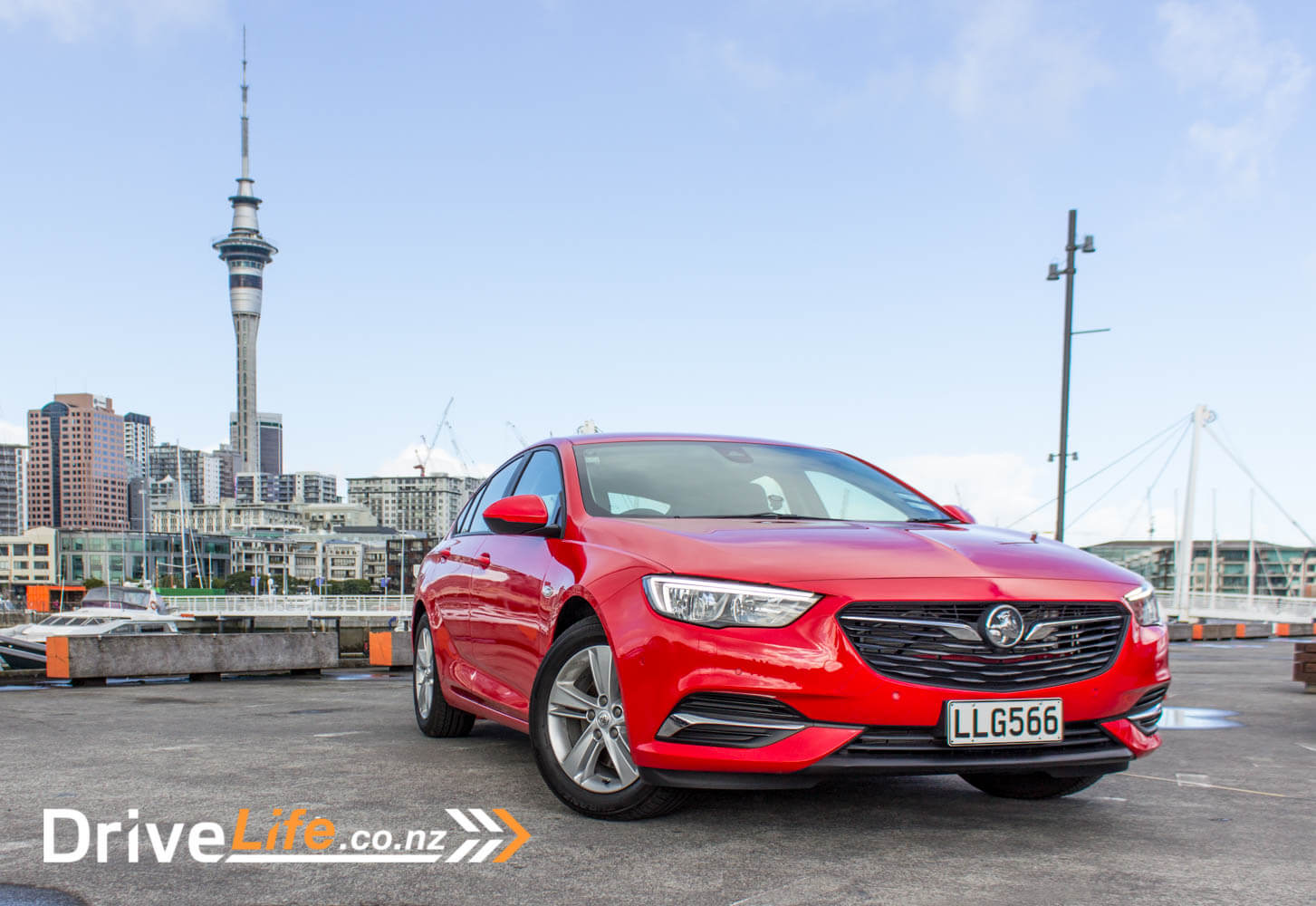
After the conference in Auckland we attended, it was time to head back to Wellington. We had lots of range left in the car, and almost got to Hamilton before the low fuel light came on – still with 115km left to go. We gassed up in Hamilton anyway. I stuck $50 of diesel in the tank, and was so happy to see this was three-quarters of a tank. Diesel is so much cheaper! Our fuel economy so far worked out at 6.0L/100km. Yes, most of this open road driving but still – this is a big, heavy car (1,593Kg without all our ‘stuff’) so I was impressed. Holden claims a combined consumption of 5.7, so I was still above that.
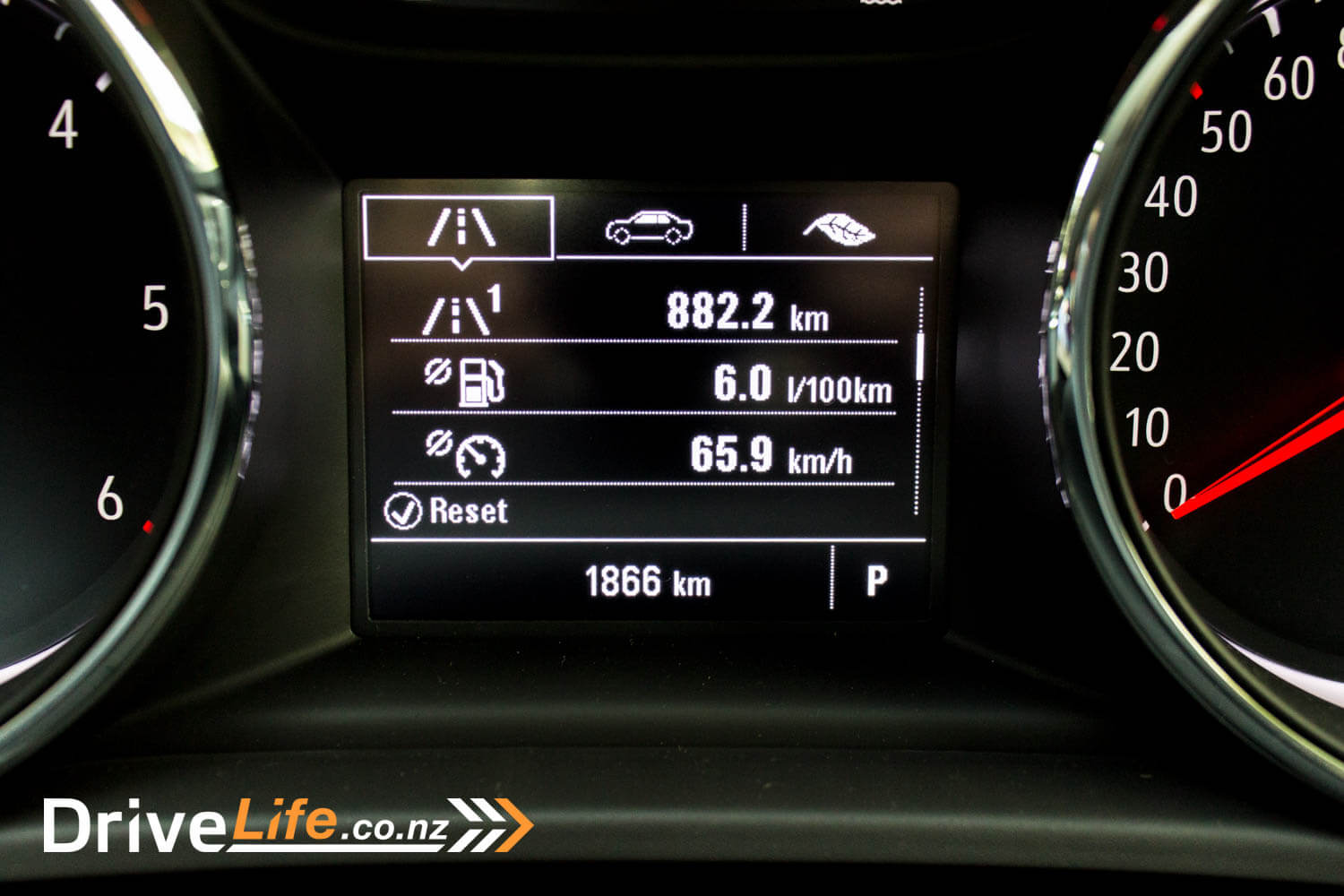
The challenge was thrown down – it was time to drive with fuel economy in mind. From Hamilton to Wellington, I used more caution with the gas pedal, and drove more gently wherever I could. Like lots of other cars, the Commodore diesel is fitted with engine auto stop. Yes, I’m going to mention it again. I just can’t understand why manufacturers can’t get this right. We encountered lots of road works south of Hamilton on the way home, many of those with flag men controlling that traffic.
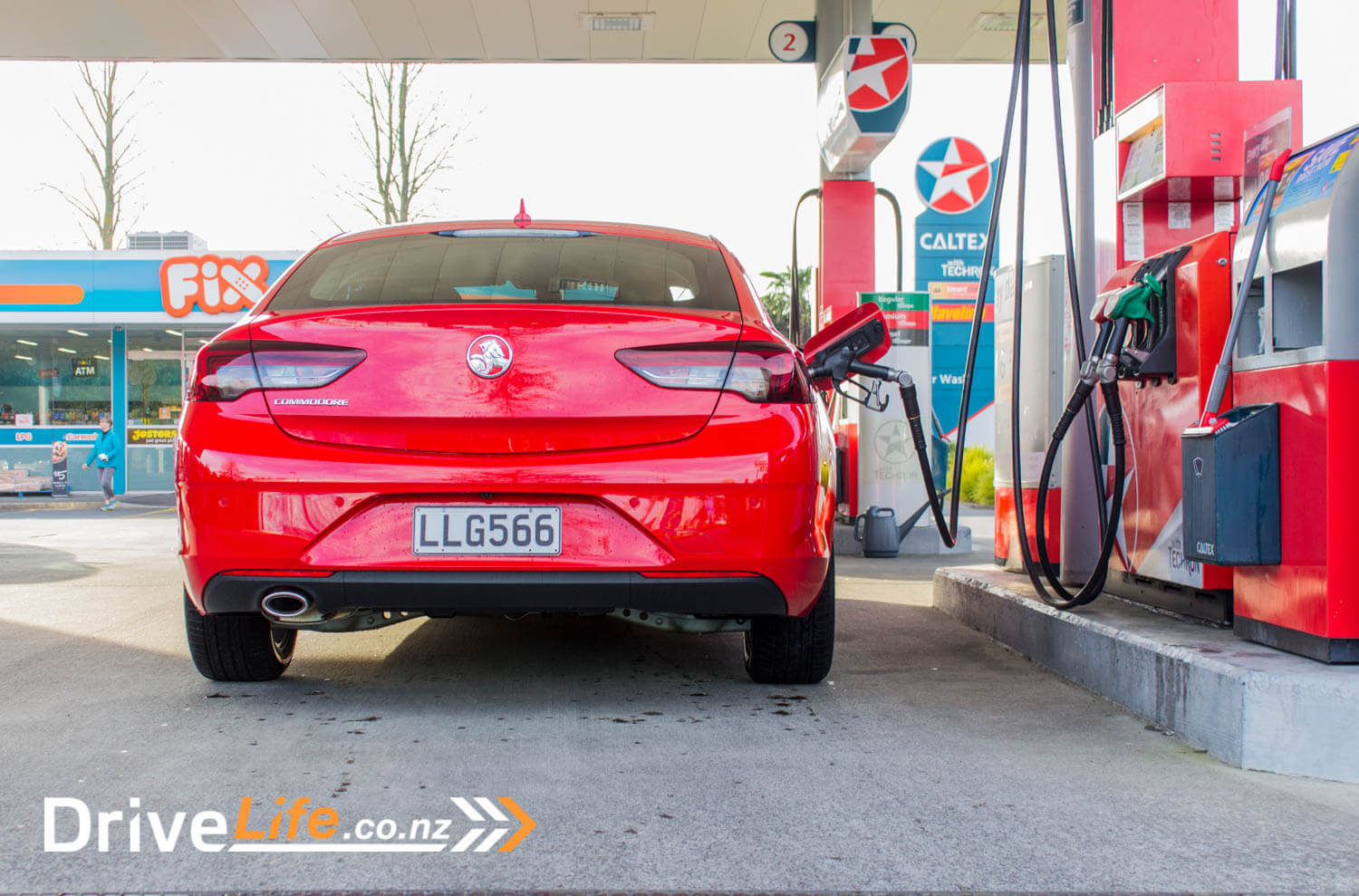
So here’s the deal; you come up to the flag man with the stop sign and stop – and the engine stops to save fuel. Perfect. You are going to be ages, so you put the park brake on and take your foot off the brake pedal – and the engine starts again. Bloody pointless. To save fuel, I ended up shutting the engine down manually rather than sitting there with my foot on the pedal. Please Holden and others, fix this. It’s not rocket science.
Anyway, on we went, me driving as carefully as possible. I had reset the second trip meter for this leg of the trip, and we got the car to give us 5.1L/100km on the trip home. Pretty impressive stuff for this size and weight of this car.
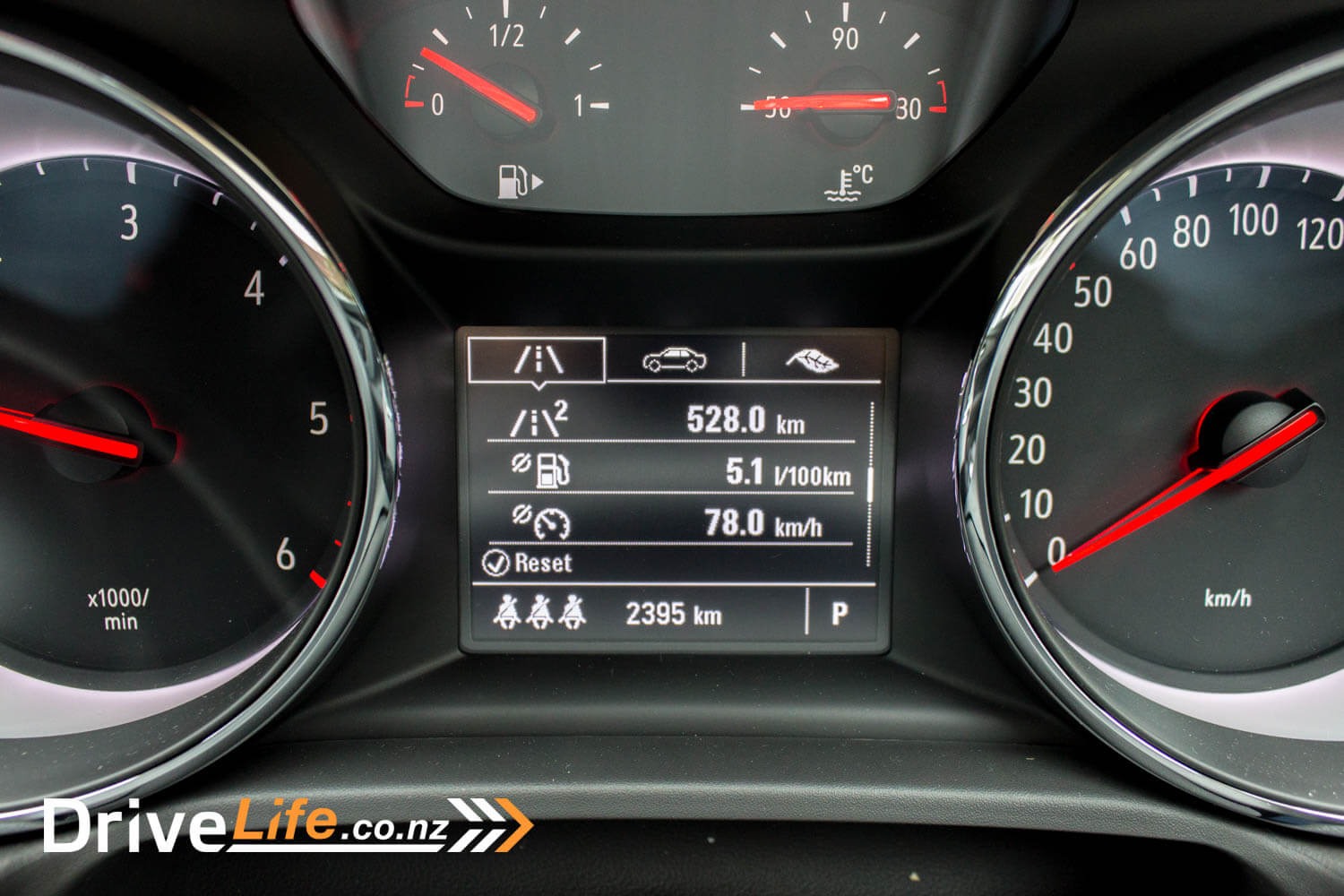
Even looking at my overall average is still impressive, at 5.7l/100km, which is almost spot on what Holden claims for the combined rating. The Toyota Camry hybrid on a long trip does around 4.8L/100km. The Lexus IS300 Hybrid I tested last year gave me 6.6L/100km (combined). Earlier this year, I tried my hardest with the Lexus CT200F Hybrid to use as little fuel as possible, right down to not having the air con on at all – and that gave me 4.9L/100km.
When John drove the 3-cylinder Mini Countryman SE All4 Hybrid over 1,670Km, he used 6.1L/100km. It shows you the bigger Commodore diesel is doing well in the fuel economy stakes.
Do you need a hybrid, or do you just want one? The Commodore diesel makes you get that calculator out to double check your numbers.
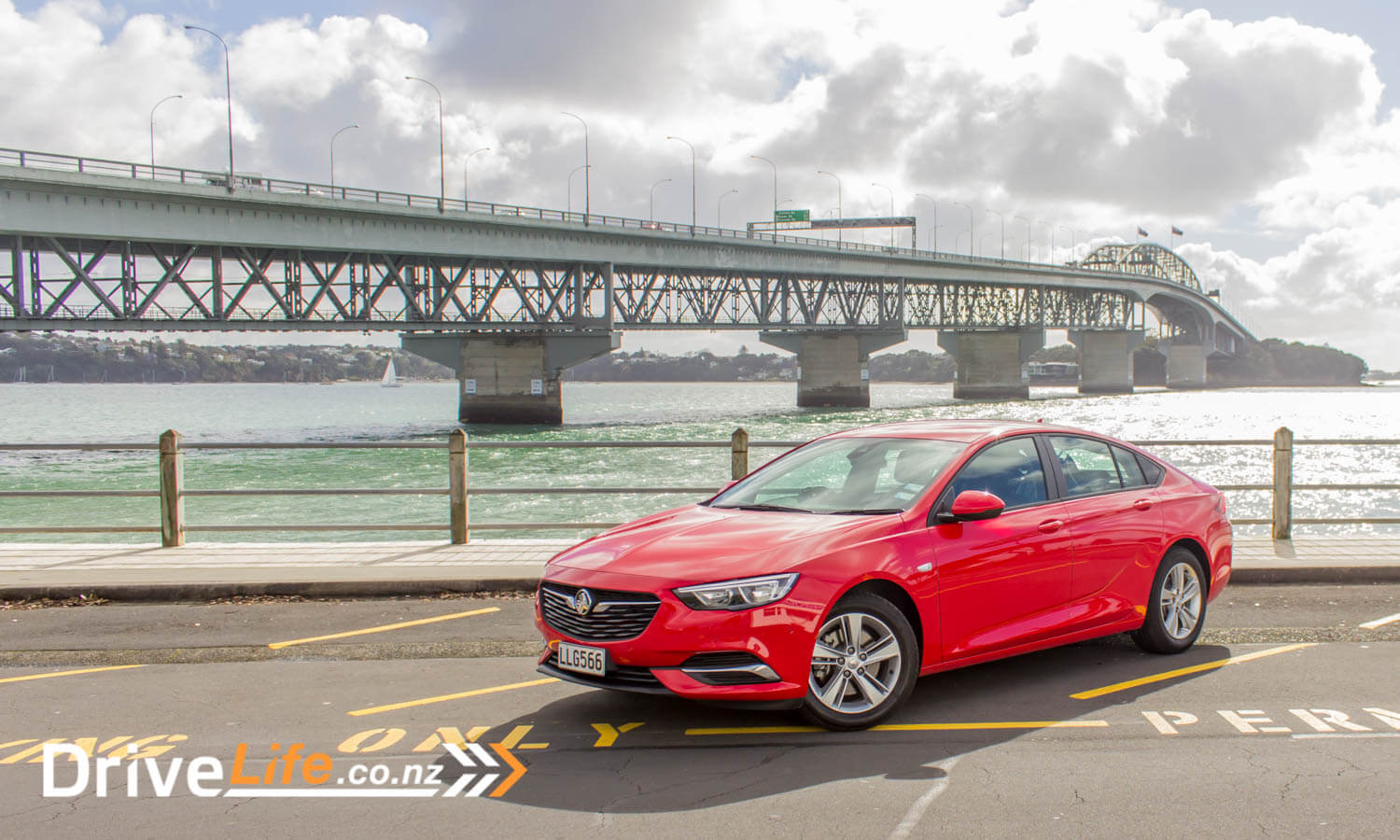
The Competition
| Brand/Model | Engine | Power/Torque | Fuel, L/100km | Seats | Tow rating, unbraked, Kg |
Boot space, litres (3rd row down where fitted) | Price – High to Low |
| Volkswagen Passat TDI Highline FWD Wagon | 2.0-litre, 4-cylinder diesel-turbo | 140kW/400Nm | 4.6 | 5 | 750 | 650 | $57,990 |
| Skoda Superb TDI Style+ sedan AWD | 2.0-litre, 4-cylinder diesel-turbo | 140kW/400Nm | 4.9 | 5 | n/a | 625 | $57,490 |
| Mazda6 GSX diesel FWD Wagon | 2.2-litre, 4-cylinder diesel-turbo | 140kW/450Nm | 5.3 | 5 | 750 | 506 | $49,295 |
| Holden Commodore LT diesel FWD Liftback | 2.0-litre, 4-cylinder diesel-turbo | 125kW/400Nm | 5.7 | 5 | 750 | 490 | $48,990 |
| Ford Mondeo Ambiente diesel FWD Liftback | 2.0-litre, 4-cylinder diesel-turbo | 132kW/400Nm | 5.1 | 5 | 750 | 557 | $46,090 |
The Pros and Cons
| Pros | Cons |
|
|
What do we think of it?
On getting home and then handing the car back after 1,600km, the overall package really impressed.
That chassis is exceptional – the way it deals with corners – sweeping or tight – is a lesson to others. Using the torque of that diesel to launch the car out of a corner and keep the body roll in check is a joy.
The engine too – so smooth, quiet on the open road and the punch it has when passing is brilliant.
Yes, there were little niggly things that I didn’t like, but overall, this is a great car. I know this is a big car, but I could easily – easily – see myself using the diesel Commodore as a Daily Driver. It does it all, and that chassis and engine/transmission just tops the package off.
Using stuff-all diesel to get around? That’s just a bonus.

Chevrons 4.5
| Vehicle Type | Large 5-door front-wheel drive liftback |
| Starting Price | $48,990 |
| Price as Tested | $48,990 |
| Engine | 2.0-litre, 4-cylinder diesel turbo |
| Power, Torque | 125kW/400Nm |
| Transmission | 8-speed automatic |
| 0-100km/h, seconds | n/a |
| Spare Wheel | Space saver |
| Kerb Weight, Kg | 1593 |
| Length x Width x Height, mm | 4897x1863x1455 |
| Cargo Capacity, litres | 490/1450 |
| Fuel capacity, litres | 61 |
| Fuel Efficiency | Advertised Spec – combined – 5.6L/100km
Real World Test – combined – 5.7L/100km Low Usage: 0-6 / Medium Usage 6-12 / High Usage 12+ |
| Towing Capacity
Kg, unbraked/braked |
750/1800 |
| Turning circle, metres | 11.14
Small: 6-10m / Medium 10-12m / Large 12m+ |
| Warranty | 3 year, 100,00km
3 years free servicing |
| ANCAP Safety Ratings | 5 Star |


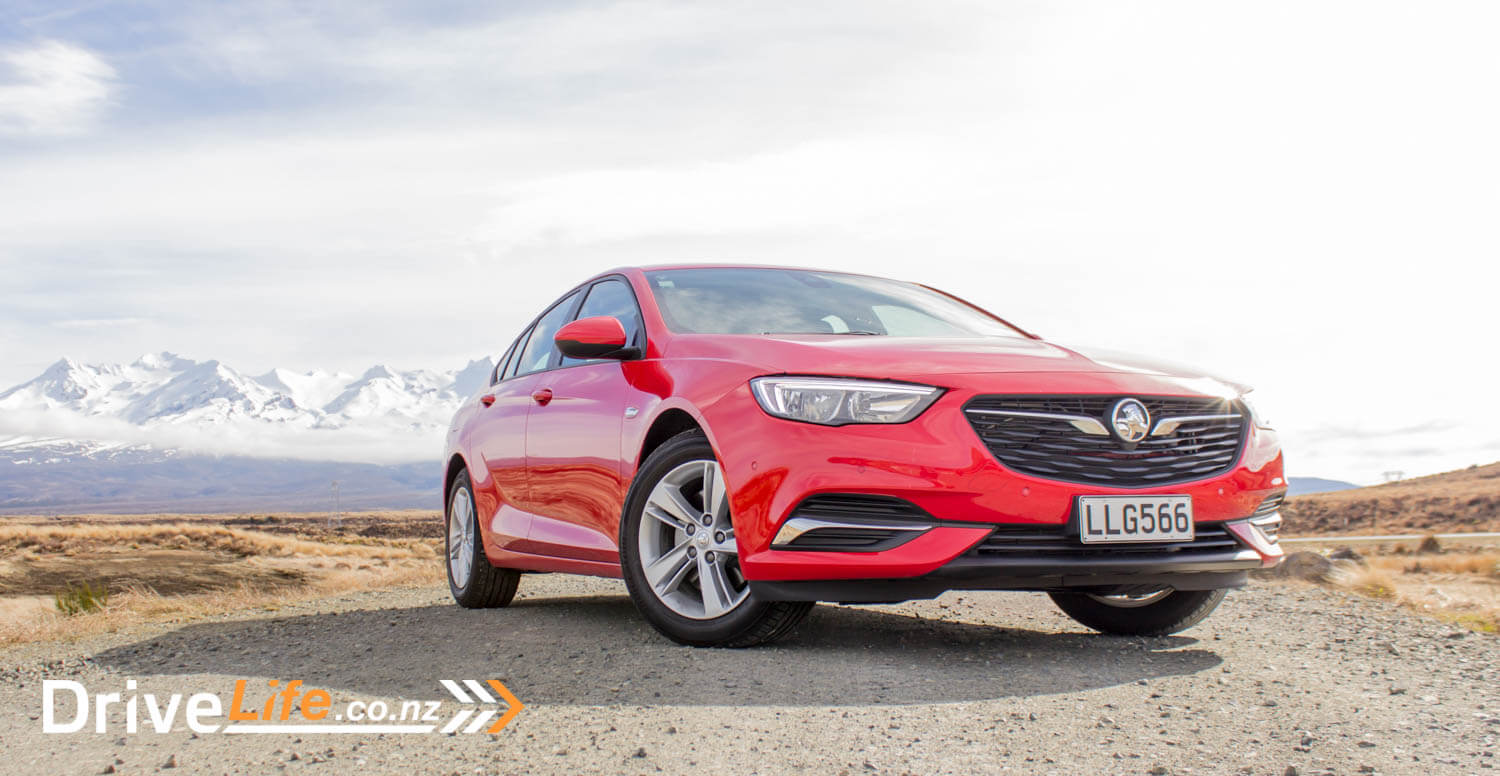











































A very helpful review, thanks.